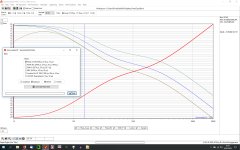Does it all make sense? The cartridge (or rather the arm/cartridge system) is not flat anyway. Would it perhaps better to make the disc-cartridge+arm-preamplifier system flat, analogous to a loudspeaker-room eq using a DSP?
Hi all, I know this is an old thread...I just did not want to start new one. Recently friend of mine asked me if I can built inverse riaa circuit for him. Just to utilize phono input as line level. I know this seems like barbaric thing to do, but it works. He is happy with the result. At the same time I built one for myself, just to be used to measure the flatness and distortion of some phono stages I have. Here is collection of simple circuits I found on the web. I hope some find it useful.
Attachments
Last edited:
Give a try to a DSP-/Soundcard-Solution, maybe also have a look at Acourate (Introseite - AudioVero).


Last edited:
Seeing as everyone is putting up links, here one from hifisonix - with PCB and write up with some test results.
An Accurate Inverse RIAA Network
I have a Quantassylum Audio analyzer that can also do it digitally - hsbrnt tried it yet though.
An Accurate Inverse RIAA Network
I have a Quantassylum Audio analyzer that can also do it digitally - hsbrnt tried it yet though.
Hi All
Audio Precision made the RIAA EQ that runs the GENERATOR with the EQ file and the plot/graph is a flat line. This part of the System One in 1975.
Duke
Audio Precision made the RIAA EQ that runs the GENERATOR with the EQ file and the plot/graph is a flat line. This part of the System One in 1975.
Duke
Dear scott wurcer, I'm interested in the wav file you mention. How can I get it? (24/96 inverse riaa wav file with 100 10th octave tones placed at exact bins for a 64k FFT.)
I send you MP but you have the box full.
Regards, Josè
I send you MP but you have the box full.
Regards, Josè
Dear scott wurcer, I'm interested in the wav file you mention. How can I get it? (24/96 inverse riaa wav file with 100 10th octave tones placed at exact bins for a 64k FFT.)
I send you MP but you have the box full.
Regards, Josè
They are all at Downloads | Linear Audio . Please remember they only work at the specified FFT length (64K is available on almost all tools). If your player does gap-less looping (I think most do) it will give you a continuous waveform.
George has posted some measurements using this technique and in my pre-amp thread I show the results of an actual analog RIAA confirmed to ~0.1dB. Remember this is a mathematical exercise you can't cut, resample, or make a lossy compressed version and have it still work.
Last edited:
- Status
- Not open for further replies.
- Home
- Source & Line
- Analogue Source
- Inverse RIAA signal generator